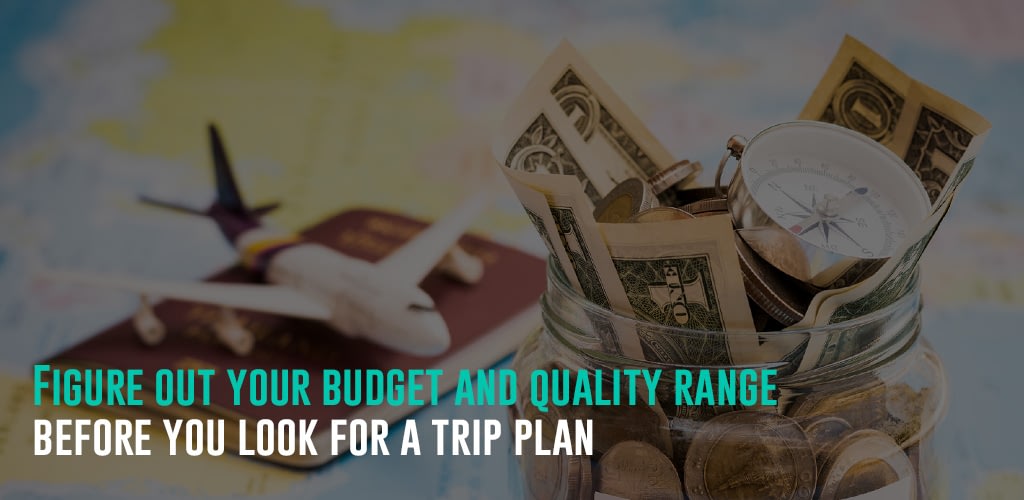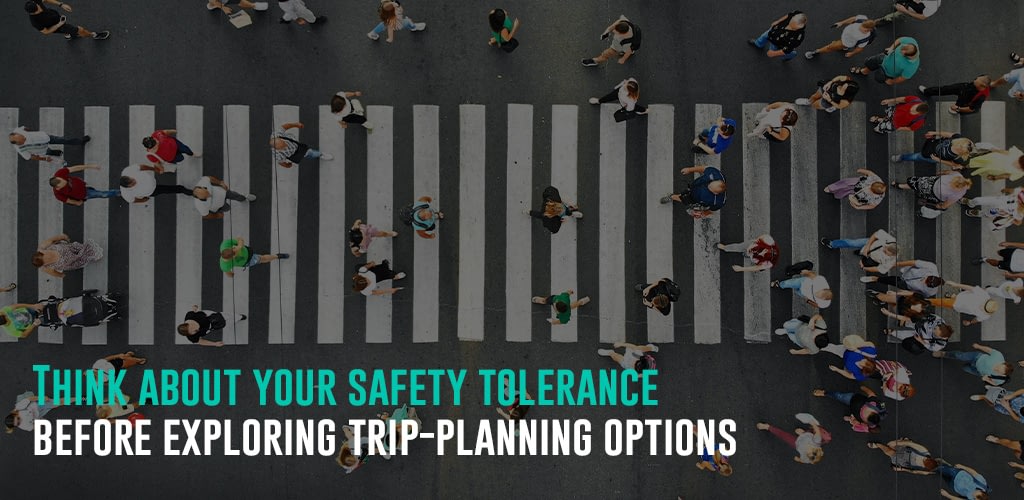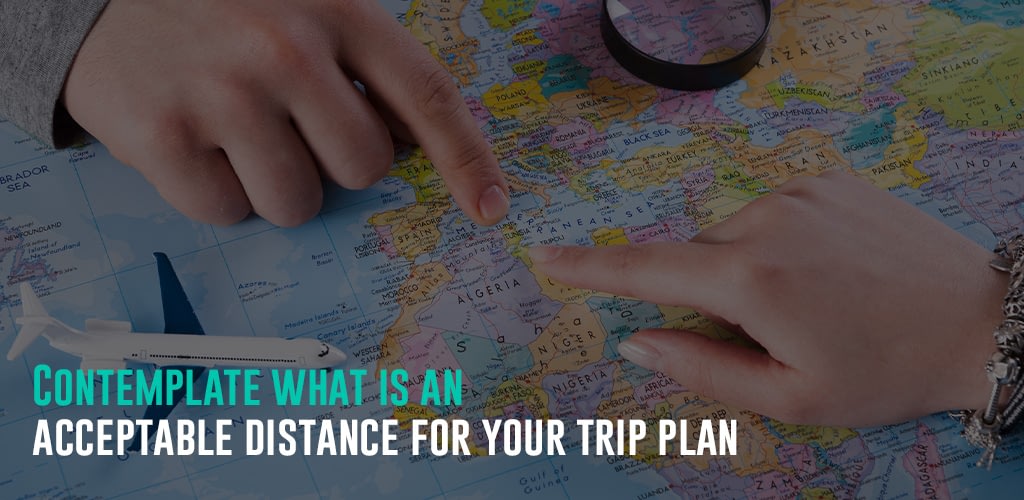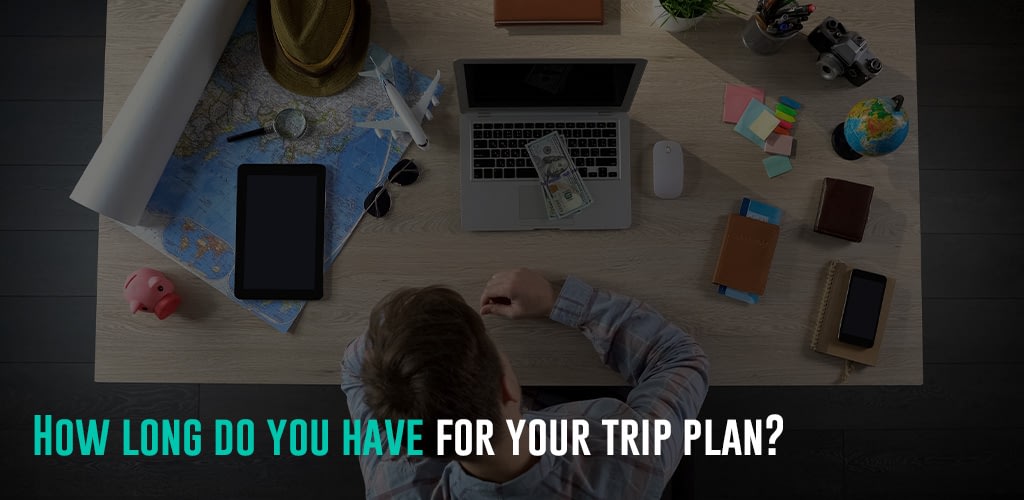A good trip plan is something that is customized to your travel persona. Not everyone will enjoy the same itinerary to the same place. You must also consider your energy levels, budget, available time, safety tolerance, and distance covered and factor these in with your group’s various personas. All these factors must align, especially with a group, or you and others will induce stress. This doesn’t make for an exciting trip and the best of memories. Let’s explore more on how to make a good trip plan!
A trip plan is essentially a personal plan around travel into the unknown. Not all of us like to plan, and some enjoy being sporadic. However, I suspect almost all of us are willing to acknowledge that exploring potentially dangerous ventures into unknown territory can lead to unexpected hazards. Having some plan will help navigate and overcome those hazards while maintaining an enjoyable and safe time. So, what are things to watch in our travel itineraries to help us assemble one or pick one offered to us?
Also, check out how Travel-Wise will help you plan future travel and create an itinerary here.
Featured Image Credit
Determine your Travel Persona before you look for a trip plan
There are many ways to travel. You may have entirely different expectations from other travelers for what you hope to accomplish from these travels. Understanding the concept of what you hope to do is categorized into what we call “travel personas.” Finding others to travel with, places to visit, and activities to do on any travel will vary vastly depending on your travel persona. Take some time to reflect on what you want to do before you travel somewhere so you can center your itinerary around it.
Finding a group of like-minded travelers who share the same travel persona as you can also be just as important. Otherwise, the group’s preferences and wants to do activities may be lacking. Of course, this makes it a bit tougher to travel, and it is an important consideration, so keep it at the heart of your planning.
Be sure to check out our article that will help you explore more about your travel persona and what your persona is right now.
Figure out your budget and quality range before you look for a trip plan

All travel costs money and resources. There are many strategies to travel with discounts and smartly. That would be too long to go into here, however. The important thing is that you understand how you want to travel. For example, there is a clear difference in comfort between hitchhiking and camping around a company versus renting a car or driver and staying in hotels. There are cheap and expensive campsites and hotels, even breaking down those categories.
Have deep contemplation and understanding of your comfort level (with some correlation to safety). Breaking down these various categories is worth its article alone! Bucketing them now in cheaper, more or less structured, and more free-form options such as camping and hostels. On the medium range would be budget hotels and Airbnb rentals. Then, of course, for those who can afford it, you have the 4-5 star hotels, resorts, and more excellent Airbnb rentals on the higher end.
Once you grasp what you are comfortable staying at each night. These categories will have vastly different budget ranges associated with the low, medium, and high-end categories I mentioned. These ranges will scale to local resources and the economy of where you are traveling. Some locations may not have places to stay with your desired quality level. This should help you grasp and understand what you need in your itinerary.
It would help to have a cutline budget for your travels to understand your desired comfort level. Find a bottom line of how much you can reasonably afford and won’t put you in the wrong financial move. With that in mind and setting this fine red line of maximum costs, you are well armed for knowing your quality and budget considerations.
Think about your safety tolerance before exploring trip-planning options

Safety is a make or break for many in what is tolerable in their travel. Low safety does not mean you are guaranteed a bad experience. Although, there are a lot of additional considerations to understanding the safety issues present in different countries.
Those who want to keep things relatively conservative and not worry about safety issues may opt to stay in countries and regions that are considered safe. This is okay and may affect your travel persona and taste for the unknown. It could also be because you are traveling with family and take their safety with the greatest concern. Keeping to places with the least likely safety risks possible is possible with some investigation.
Those willing to explore areas with lesser safety options research what to bring or consider to mitigate the risks. Areas with lesser safety may be affected by the region’s remoteness, in the wilderness, politically unstable regions, require technical skill, or be crime-related. However, proper planning, gear, skill, and preparation can mitigate even the most significant safety risks. Understanding those safety limits you are prepared for is the most important consideration in planning your tolerances in a good itinerary.
Contemplate what is an acceptable distance for your trip plan

Distance is a huge factor for you to consider as well! This whole category affects your time zone worldwide, cost, time, and coordination to get somewhere. With this in consideration, let’s explore how these will affect what to look for in your travel itinerary.
The further away a destination is, be it the house next to you, several countries away, Antarctica, or Mars, the more you need to consider. There is more planning, risks, costs, and time to get there. Are you okay with accepting the amount of required work for destinations that are further away? What is your tolerance? For example, Mars is pushing the limits of human capability to reach its potential. Antarctica is fairly explored now but still quite challenging to reach. The house next door likely needs minimal effort or planning. Know your ideal distance as it affects where exactly you are comfortable going.
Another factor is the time zone. This will affect your body’s biorhythms (many call jet lag) as your body takes time to adapt. The sleep cycle will adjust after a few days and add a tax on your body. Further, the time zone may affect you. You could keep in touch with friends, family, and work. Land on what works for you and if it matters to you as it ties directly into what travel itineraries work for you.
How long do you have for your trip plan?

This is almost obvious for most folk when considering travel options. You have a time limit for some of us working full-time or having other tied commitments. Understanding what that time budget is, being vacation time, agreement with others, or perhaps your budget constraints is essential.
Some of us are digital nomads and travel for a living or have flexible work, for which time is less of a concern. Still, most want to return to their home occasionally, so that is still a time to consider. Others have much tighter schedules from one to several weeks, limiting your options.
Many destinations in this world have amazing things to see. With a set time limit, it will be tough to see everything. I almost guarantee you that you will leave many destinations thinking to yourself about what you missed. Still, you can fine-tune your travel itinerary by understanding your time budget to maximize where you can go. With some consideration into this time budget, you can rest assured you can see the best an area offers.
Did you know Travel-Wise is a free trip-planning tool to help you make your next trip plans a breeze?

